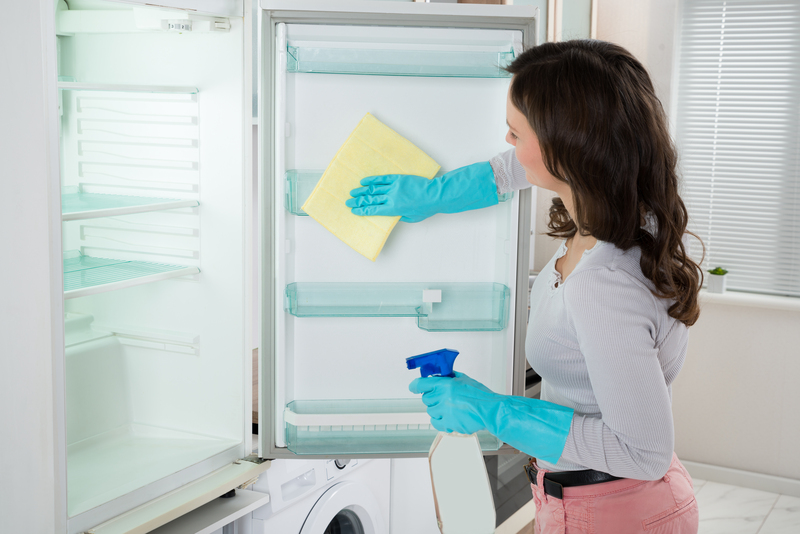Mold-Free Bathroom: Solutions for Lasting Freshness
Posted on 15/09/2025
Mold-Free Bathroom: Solutions for Lasting Freshness
A mold-free bathroom isn't just an aesthetic dream--it's crucial for your health, comfort, and the longevity of your home. Unsightly black spots, musty odors, and persistent stains are signs that your bathroom may be harboring mold or mildew. Keeping your bathroom fresh and sanitized is possible with a few proactive strategies and regular maintenance. In this comprehensive guide, we'll uncover science-backed solutions and expert tips for achieving lasting freshness and a bathroom without mold.

What Is Mold and Why Does It Thrive in Bathrooms?
Mold is a type of fungus that grows in damp, warm, and poorly ventilated environments. Bathrooms, with their humid air, warm temperatures, and abundant moisture, provide the perfect breeding ground for mold spores. These spores are microscopic and present everywhere, waiting for the right conditions to multiply.
Common Mold Species in Bathrooms
- Aspergillus: Often found on walls and ceilings.
- Cladosporium: Typically appears on wooden surfaces and sinks.
- Stachybotrys chartarum (black mold): Notorious for its potential health risks.
Left unchecked, bathroom mold can trigger allergies, respiratory issues, and even damage your home's structure. This makes prevention crucial for a fresh and healthy bathroom environment.
Why Mold Loves Bathrooms: The Science Behind Growth
Mold spores need just a few ingredients to thrive:
- Moisture (from showering, bathing, and humid air)
- Organic material (soap scum, wood, drywall, dust)
- Warmth and low ventilation
Understanding these triggers is the first step to creating a lasting mold-free bathroom.
Signs Your Bathroom Has a Mold Problem
Early detection is key. Look for these warning signs:
- Musty Odors: Persistent earthy, damp smells.
- Visible Growth: Black, green, or brown spots on tiles, grout, or walls.
- Peeling Paint or Wallpaper: Moisture buildup behind surfaces.
- Condensation: Regular fogging on mirrors or windows.
- Health Symptoms: Allergic reactions or breathing difficulties after bathroom use.
Strategies for a Mold-Proof Bathroom
1. Improve Ventilation
A well-ventilated bathroom is less likely to turn into a mold haven. Make it a habit to:
- Install and use a high-quality exhaust fan for at least 20 minutes after each shower.
- Open windows and doors when humidity is high.
- Use a dehumidifier if natural ventilation is limited.
2. Control Moisture and Humidity
Moisture is the enemy of a mold-resistant bathroom. Here's how you can keep humidity in check:
- Wipe down shower walls and doors after use. This removes water droplets where spores can take root.
- Fix leaks promptly. Dripping taps or hidden pipe leaks create constant dampness.
- Keep the bathroom door or window open when possible to promote airflow.
3. Choose Mold-Resistant Materials
Upgrading to mold-proof surfaces can make a world of difference:
- Mold-resistant paint: Forms a protective barrier to block moisture and mildew.
- Acrylic or fiberglass shower surrounds: Less porous than tile or grout, so they absorb less moisture.
- Sealed grout and caulk: Reseal every year or use products with built-in mildew preventers.
4. Deep Cleaning for Mold Prevention
Consistent cleaning is vital for effective mold prevention in bathrooms:
- Scrub tiles, grout, and hard surfaces every week with a mildew-fighting cleaner.
- Pay special attention to hidden spots around faucets, under sinks, and shower doors.
- Don't forget to clean bath mats and shower curtains--both can collect spores and moisture.
DIY Mold Removal: Safe and Effective Solutions
If you discover minor mold growth, prompt action can prevent a bigger problem. Try these natural and chemical approaches for a mold-free shower and bathroom:
Natural Remedies
- White Vinegar: Spray undiluted vinegar on moldy areas, leave for an hour, then scrub and rinse.
- Baking Soda Paste: Mix with water, apply to stains, let sit, and wash off.
- Hydrogen Peroxide (3%): Spray, leave for 10 minutes, then wipe down.
*Always test in a small area first and use gloves and a mask if mold is extensive.
Chemical Cleaners
- Bleach-based sprays: Highly effective for stubborn growth but must be used in well-ventilated areas.
- Commercial mold removers: Follow instructions and never mix with other cleaners.
Long-Term Mold Prevention: Freshness That Lasts
Regular Maintenance Checklist
- Check for leaks under sinks and in plumbing monthly.
- Wash or replace linens and bath mats every week.
- Clean exhaust fans and air vents quarterly.
- Re-seal grout and tiles at least annually.
Upgrade for a Mold-Free Future
Small renovations can have big impacts on mold resistance:
- Install waterproof wall panels in showers.
- Replace wooden cabinetry with moisture-resistant materials, such as PVC or sealed plywood.
- Add motion-sensor ventilation systems that activate automatically when humidity rises.
Smart Bathroom Habits
- Hang towels spread out so they dry quickly.
- Keep shampoo and soap bottles clean and dry underneath.
- Do a quick visual check after every bath or shower for signs of moisture, pooling water, or mold.

Frequently Asked Questions: Bathroom Mold Solutions
How do I stop mold from growing in my bathroom permanently?
The secret to a permanently mold-free bathroom is controlling moisture at all times. Combine proper ventilation, prompt leak repairs, regular cleaning, and the use of mold-resistant materials. Proactive maintenance is more effective than remediation after the fact.
What is the best mold-resistant paint for bathrooms?
Look for high-quality paints labeled specifically as mold- and mildew-resistant, such as Zinsser Perma-White or Benjamin Moore Aura. Apply according to the manufacturer's instructions for the best results.
How often should I clean my bathroom to prevent mold?
A weekly deep clean, combined with daily habits like wiping down wet surfaces and airing out the room, will keep most bathrooms free of mold and mildew.
Should I use a humidifier in the bathroom?
Typically, bathrooms do not need humidifiers, as the primary issue is excess moisture. Instead, consider using a dehumidifier if your bathroom stays damp between uses.
Is bathroom mold dangerous?
While minor mold growth poses little risk to healthy adults, persistent exposure--especially to black mold--can cause allergies, asthma, or respiratory issues. If symptoms appear or mold covers a large area, consult a specialist.
Conclusion: Your Guide to Lasting Bathroom Freshness
Achieving a mold-free bathroom is entirely possible with a blend of smart design choices, daily upkeep, and savvy cleaning. By understanding the conditions that foster mold growth and implementing robust mold prevention strategies, you'll enjoy a fresher, cleaner, and healthier space for years to come.
Take control today:
- Ventilate consistently
- Eliminate standing water
- Choose anti-mold building products
- Maintain a regular cleaning routine
A fresh, mold-free bathroom isn't just a luxury--it's an investment in your well-being and the lifespan of your home. Start implementing these proven solutions now to banish mold for good!




